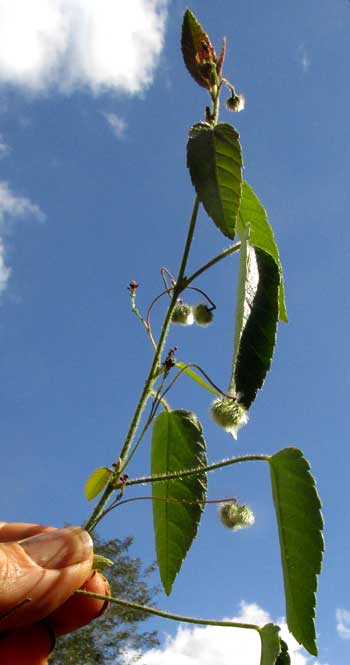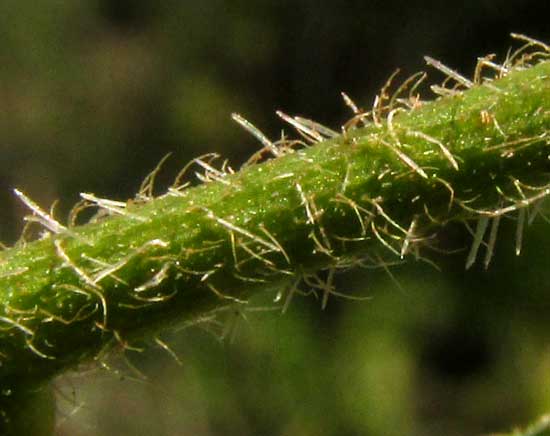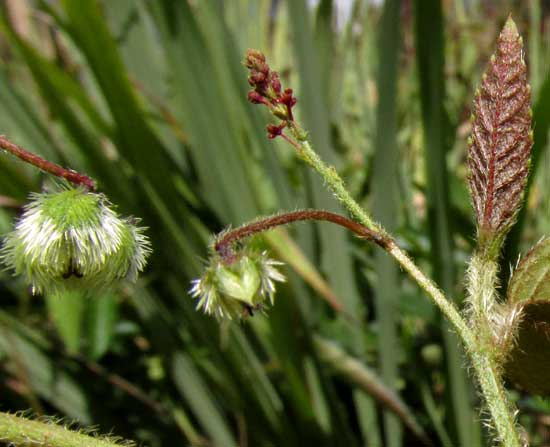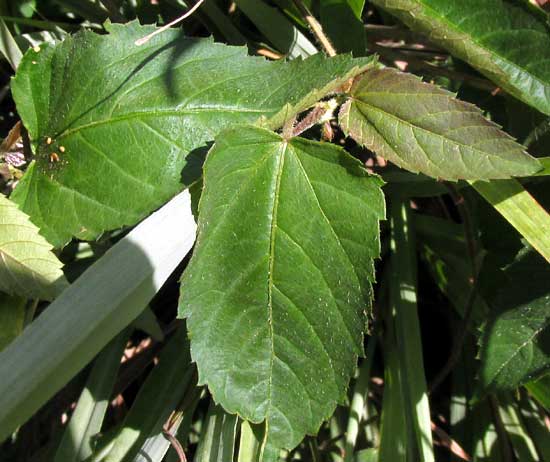Excerpts from Jim Conrad's
Naturalist Newsletter
from the February 11, 2018 Newsletter issued from Rancho Regenesis in the woods ±4kms west of Ek Balam Ruins; elevation ~40m (~130 ft), N20.876°, W88.170°; north-central Yucatán, MÉXICO
YUCATAN NOSEBURN
In the garden a half-heartedly vining herb turned up almost hidden inside a washing-machine-size, dense clump of lemongrass. I pulled out a branch tip, held it against the sky so its details could be seen, and got the photograph shown below:

It's a curious looking plant, with such fuzzy items at the ends of long stems, and elm-tree-like leaves on long, hairy petioles. In fact, the whole thing was exceedingly hairy, and once I'd made contact with some of the hairs I realized that they stung like a nettle's stinging hairs. Below, you can see the stingers amid non-stinging hairs on a stem:

The fuzzy balls, which were three-chambered fruits, also bristled with sharp hairs, as seen below:

The dark, three-armed item in the center is a branched style bearing stigmas. A side view of less mature fruits, a small flowering head of minute, purplish male flowers, and an expanding purplish leaf is shown below:

And a shot of some mature leaves is provided below:

We met something very similar to this back in Texas, and you might enjoy seeing how our current plant compares with it. The smaller Texas plant, which bore much narrower leaves but similarly hairy fruits, can be seen at www.backyardnature.net/n/h/noseburn.htm
Our Texas plant, a member of the Euphorbia or Poinsettia Family, the Euphorbiaceae, wasTragia ramosa, in English sometimes called Branched Noseburn. Our Yucatan garden plant turns out to be TRAGIA YUCATANENSIS, which I call Yucatan Noseburn, though I've seen no one else using that name.
Yucatan Noseburn seems to be common in the Yucatan Peninsula. A very similar species, Tragia glanduligera, is of much greater distribution, from Texas south through eastern Mexico into Guatemala. From pictures on the Internet I can't see any difference between the two species, though the Flora of North America describes the inflorescences of Tragia glanduligera as prominently bearing "stipitate glands," or glands atop stiff stalks, or "stipes," and our garden plants don't have those.
Little information is available for this species, but it's a pleasure to meet, if only because of its stinging hairs and funny name.